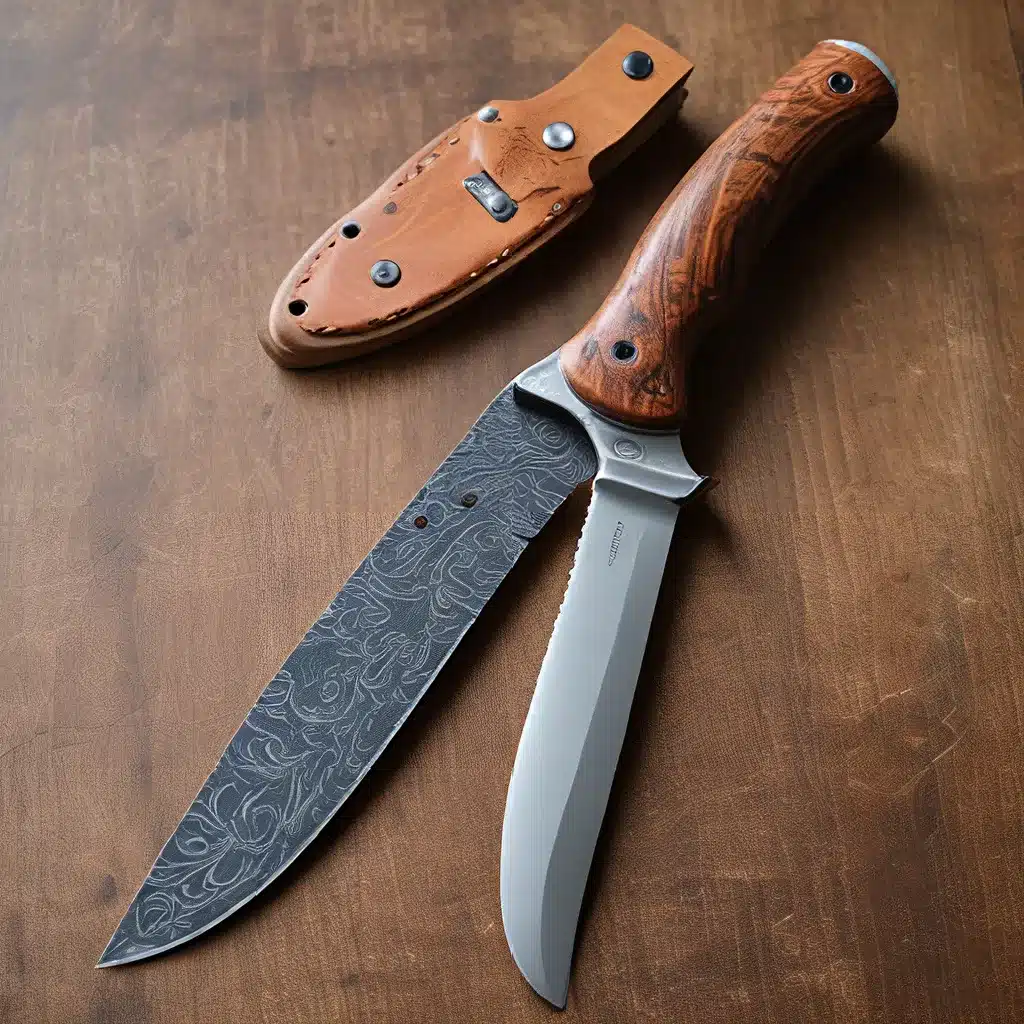
As a self-proclaimed knife enthusiast and someone who’s spent more hours than I care to admit tinkering with my precious edged tools, I know a thing or two about maintaining their integrity. And let me tell you, it’s not as straightforward as you might think. In fact, it’s a delicate dance between steel, stone, and a whole lot of patience.
Keeping Your Stones in Tip-Top Shape
One of the golden rules when it comes to sharpening is to make sure your sharpening stones are in pristine condition. After all, what good is a razor-sharp blade if the stones you’re using to hone it are full of grit and contaminants? Believe me, I’ve been there, and let me tell you, it’s a surefire way to end up with a blade that’s more like a serrated butter knife than a precision cutting tool.
Now, I know what you’re thinking – how hard can it be to keep a few stones clean? Well, my friends, let me tell you, it’s a whole lot trickier than it seems. You see, those tiny little particles of hardened steel and abrasive grit have a sneaky way of worming their way into the nooks and crannies of your stones, and if you’re not careful, they can wreak havoc on your blade’s edge.
That’s where the humble Tawashi brush comes in. These little brushes, made from the tough, water-resistant fibers of the coconut husk, are an absolute godsend when it comes to keeping your stones in tip-top shape. Unlike their plastic or nylon counterparts, these natural bristle brushes don’t seem to hold onto those pesky grit particles, making them far more effective at keeping your stones clean and ready for action.
The Subtle Art of Blade Maintenance
But the battle doesn’t end there, oh no. Once you’ve got your stones in order, you’ve got to turn your attention to the blades themselves. And let me tell you, that’s where the real magic happens.
See, the thing about high-quality, professional-grade Japanese knives is that they’re not your average off-the-shelf variety. These babies are hand-forged, differentially tempered, and built to withstand the rigors of serious cutting tasks. And let me tell you, they demand a certain level of care and attention if you want to keep them performing at their best.
One of the most crucial aspects of maintaining your blades is managing the ura – that’s the hollow-ground depression on the back of the blade. This feature, unique to Japanese-style knives, is more than just a pretty design element; it’s an integral part of what gives these blades their exceptional cutting performance.
But here’s the catch – that ura needs to be properly maintained, and that’s where things can get a bit tricky. You see, as you sharpen your blade over time, the lands surrounding the ura can start to wear down, and if you’re not careful, you can end up with a blade that’s more like a dull butter knife than a precision cutting tool.
That’s where the uradashi and uraoshi techniques come into play. These specialized sharpening methods are designed to help you restore that all-important ura, keeping your blade in tip-top shape and ready to tackle even the toughest cutting tasks.
The Importance of Proper Technique
Now, I know what you’re thinking – “Uradashi and uraoshi? That sounds like some sort of ancient Japanese martial art!” And you know what? You’re not wrong. These techniques are the result of centuries of knife-making and sharpening expertise, passed down from generation to generation of skilled Japanese artisans.
But don’t let that intimidate you. With a little bit of practice and the right tools, you too can master the art of blade maintenance. It’s all about understanding the nuances of steel, the properties of abrasives, and the subtle interplay between the different components of your knife.
And let me tell you, once you’ve got it down, it’s a feeling like no other. Imagine the satisfaction of taking a dull, worn-out blade and transforming it into a razor-sharp, precision instrument – it’s like a little bit of magic, right there in the palm of your hand.
The Rewards of Dedication
But the real payoff, my friends, is in the performance. You see, when you take the time to properly maintain your blades, you’re not just keeping them looking pretty; you’re ensuring that they’re always ready to tackle even the toughest cutting tasks with ease.
Think about it – a well-maintained blade will glide through your ingredients with effortless precision, leaving you with cleanly sliced results every time. And let’s not forget the pure, unadulterated joy of using a knife that just feels right in your hand. It’s like a symphony of steel and wood, working together in perfect harmony.
So, if you’re a true knife enthusiast like me, I encourage you to dive headfirst into the world of blade maintenance. It might seem daunting at first, but trust me, the rewards are well worth the effort. Who knows, you might even surprise yourself and discover a newfound appreciation for the subtle art of keeping your blades in tip-top shape.
And don’t forget – when it comes to maintaining your precious edged tools, Herman Knives is always here to lend a helping hand. So what are you waiting for? Let’s get to work and unlock the full potential of your blades!


